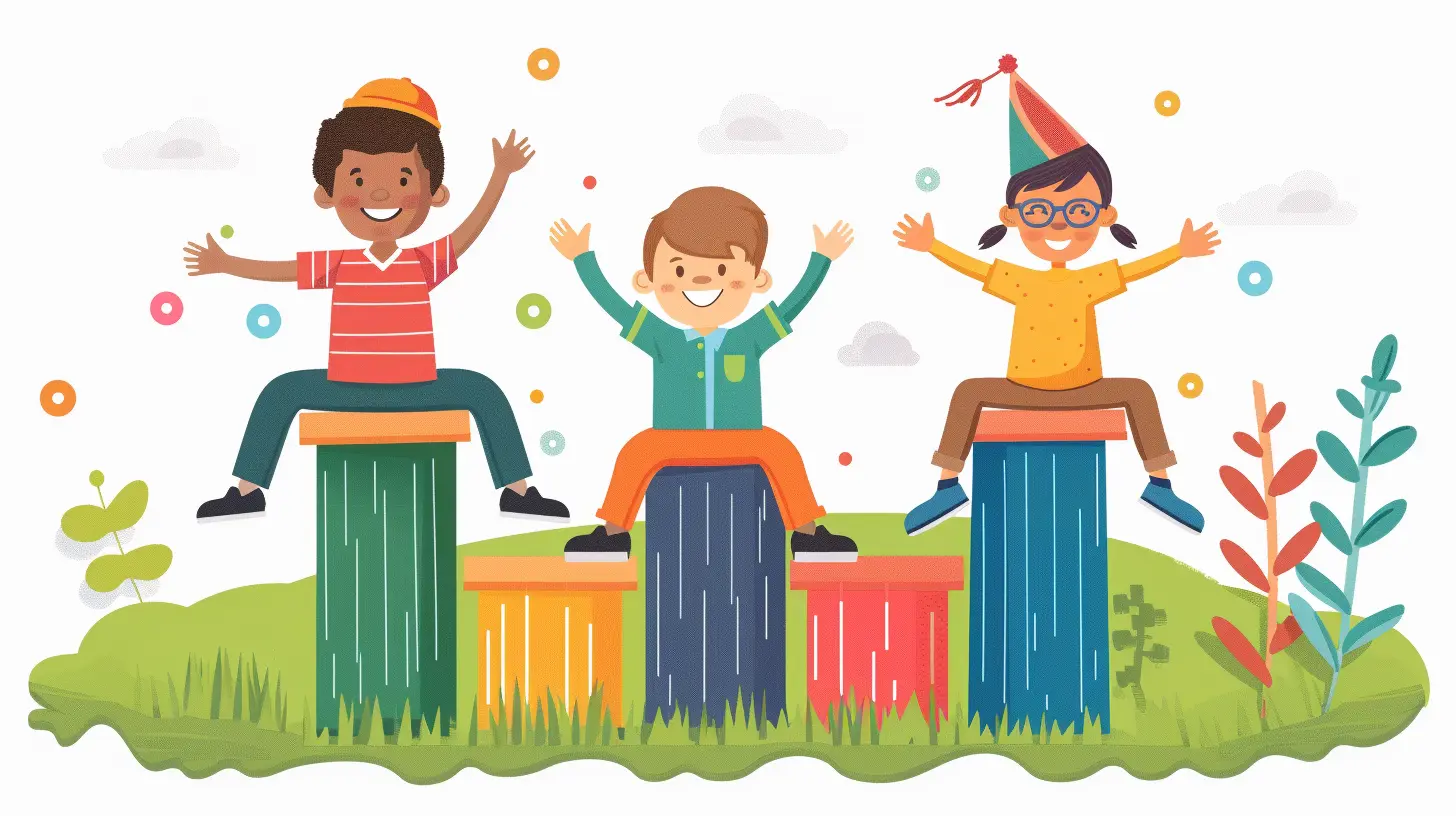Bridging the Gap Between Home and School for Children with Learning Disabilities
8 May 2025
When it comes to education, children with learning disabilities often face unique challenges that can make school feel like an uphill battle. But here's the thing—learning doesn't stop when the school bell rings. The connection between home and school plays a crucial role in shaping a child's education, confidence, and overall well-being.
So, how can we bridge this gap and create a supportive learning environment both at home and in the classroom? Let’s dive deep into practical strategies, communication tips, and the vital role parents and teachers play in a child’s academic journey. 
Understanding Learning Disabilities
Before we jump into solutions, let's take a moment to understand what learning disabilities really are. Contrary to common misconceptions, a learning disability doesn’t mean a child isn’t smart or capable. It simply means their brain processes information in a different way that might make reading, writing, math, or even focusing more challenging.Some common learning disabilities include:
- Dyslexia – Difficulty with reading and comprehension
- Dysgraphia – Struggles with writing and fine motor skills
- Dyscalculia – Trouble understanding numbers and math concepts
- ADHD (Attention Deficit Hyperactivity Disorder) – Difficulty staying focused and following through on tasks
Every child is unique, which means their learning needs are too. Recognizing these differences is the first step toward providing the right support. 
The Critical Role of Parent-Teacher Communication
One of the most effective ways to bridge the gap between home and school is through strong communication between parents and teachers. Imagine trying to complete a puzzle with missing pieces—it’s frustrating! The same goes for a child's education. When parents and educators work together, they create a complete picture of the child’s learning needs and strengths.How to Improve Communication:
- Regular Check-Ins – Don’t wait for parent-teacher conferences; stay in touch through emails, phone calls, or even quick chats after school.- Be Honest and Open – Parents should share insights about their child's learning struggles, while teachers should provide updates on classroom progress.
- Use a Communication Notebook or App – Tools like ClassDojo or Google Classroom make it easier to update parents on assignments, behaviors, and progress.
- Ask, Don’t Assume – If something seems off, ask for clarification. Clear communication prevents misunderstandings.
The more parents and teachers collaborate, the easier it becomes to create a learning environment that works for the child both at home and at school. 
Creating a Supportive Home Environment
A child’s home environment plays a massive role in their educational success. Think of home as a child’s personal training ground—if they feel supported there, they’ll feel more confident tackling school challenges.Practical Tips for Parents:
1. Set Up a Dedicated Study Space – A quiet, clutter-free area can help improve focus and minimize distractions.2. Establish a Routine – Consistent schedules help reinforce learning habits and create a sense of stability.
3. Use Multisensory Learning Methods – Some kids learn better through touch, movement, or visual aids rather than traditional reading and writing. Try incorporating videos, audiobooks, or hands-on activities.
4. Encourage Breaks – Short breaks between study sessions can boost attention span and prevent frustration.
5. Boost Confidence with Positive Reinforcement – Celebrate small wins! A simple "I’m proud of you" can make a world of difference.
Remember, learning at home isn’t about recreating a classroom—it’s about fostering a love for learning in a way that suits your child’s unique needs. 
The School’s Role in Supporting Students with Learning Disabilities
While home plays a crucial part, schools also need to create an inclusive environment that supports children with learning disabilities. Luckily, many schools offer Individualized Education Programs (IEPs) and 504 Plans to provide tailored support.How Schools Can Help:
- Provide Accommodations – Extra time on tests, using audiobooks, or offering alternative assignments can make learning more accessible.
- Use Assistive Technology – Tools like speech-to-text apps or screen readers can help children keep up with schoolwork.
- Offer One-on-One Support – Special education teachers or tutors can provide additional assistance when needed.
- Encourage Peer Support – Partnering students with buddies for group activities fosters inclusivity and confidence.
- Train Teachers on Inclusive Strategies – Professional development ensures educators understand how to teach students with diverse learning needs.
The more schools adapt their teaching methods, the easier learning becomes for students with unique challenges.
Bridging the Gap: Teamwork is the Key
Now that we’ve looked at both home and school strategies, let’s tie it all together. Bridging the gap between home and school isn’t about one side doing all the work—it’s about teamwork.Steps to Strengthen the Home-School Connection:
1. Set Common Goals – Parents, teachers, and even the student should be on the same page about learning objectives.2. Create an Action Plan – Outline strategies, accommodations, and resources that will be used at both home and school.
3. Monitor Progress Together – Keep track of improvements and adjust strategies as needed.
4. Stay Positive and Patient – Every small step forward is progress. Recognize that growth is a journey.
5. Celebrate Achievements – Whether it’s finishing a book or mastering a math concept, celebrating accomplishments builds confidence.
When parents and educators work together, children with learning disabilities feel supported, understood, and empowered—and that makes all the difference.
A Final Thought
Bridging the gap between home and school for children with learning disabilities isn’t always easy, but it’s absolutely possible. It starts with communication, understanding, and a commitment to creating a supportive learning environment both in and out of the classroom.At the end of the day, the goal isn’t just academic success—it’s building confidence, resilience, and a love for learning that will last a lifetime. So whether you’re a parent or teacher, know that your efforts matter. You are shaping the future of a child who just needs the right tools to shine.
all images in this post were generated using AI tools
Category:
Learning DisabilitiesAuthor:

Bethany Hudson
Discussion
rate this article
6 comments
Victoria Hernandez
This article beautifully highlights the essential role of collaboration between home and school for children with learning disabilities. By fostering open communication and tailored strategies, we can empower these children to thrive academically and socially in both environments. Great insights!
May 17, 2025 at 1:01 PM

Bethany Hudson
Thank you for your thoughtful comment! I completely agree that collaboration and open communication are vital for supporting children with learning disabilities.
Zephyra Meyers
This article highlights crucial strategies for fostering collaboration between home and school, essential for supporting children with learning disabilities. By promoting open communication and consistent approaches, parents and educators can create a cohesive environment that enhances learning and development for these children. A must-read!
May 14, 2025 at 8:39 PM

Bethany Hudson
Thank you for your insightful comment! I'm glad you found the strategies valuable for fostering collaboration between home and school. Together, we can make a significant difference in the lives of children with learning disabilities.
Jenna McLaury
This article is a wonderful resource for fostering collaboration between home and school for children with learning disabilities. By building strong partnerships, we can create supportive environments that empower these children to thrive academically and emotionally. Great insights!
May 13, 2025 at 8:15 PM

Bethany Hudson
Thank you for your thoughtful feedback! I'm glad you found the article helpful in fostering collaboration for children with learning disabilities.
Harley Oliver
The journey of bridging home and school for children with learning disabilities requires empathy, collaboration, and understanding. By fostering open communication and tailored strategies, we empower families and educators to create a cohesive support system, enabling children to thrive in both environments and realize their full potential.
May 13, 2025 at 3:29 AM

Bethany Hudson
Thank you for highlighting the importance of empathy and collaboration in bridging home and school for children with learning disabilities. Your insights align perfectly with our goal of creating a supportive environment for these children to thrive.
Juno Coffey
This article highlights the essential connection between home and school for children with learning disabilities. By fostering collaboration and understanding, we can create supportive environments that empower these students to thrive academically and socially.
May 12, 2025 at 11:47 AM

Bethany Hudson
Thank you for highlighting this crucial connection! Collaboration between home and school is indeed key to empowering children with learning disabilities.
Elowis Sullivan
Because we all know learning doesn’t stop at the school door—let’s get real!
May 11, 2025 at 11:46 AM

Bethany Hudson
Absolutely! Learning continues beyond the classroom, making collaboration between home and school essential for supporting children with learning disabilities.




